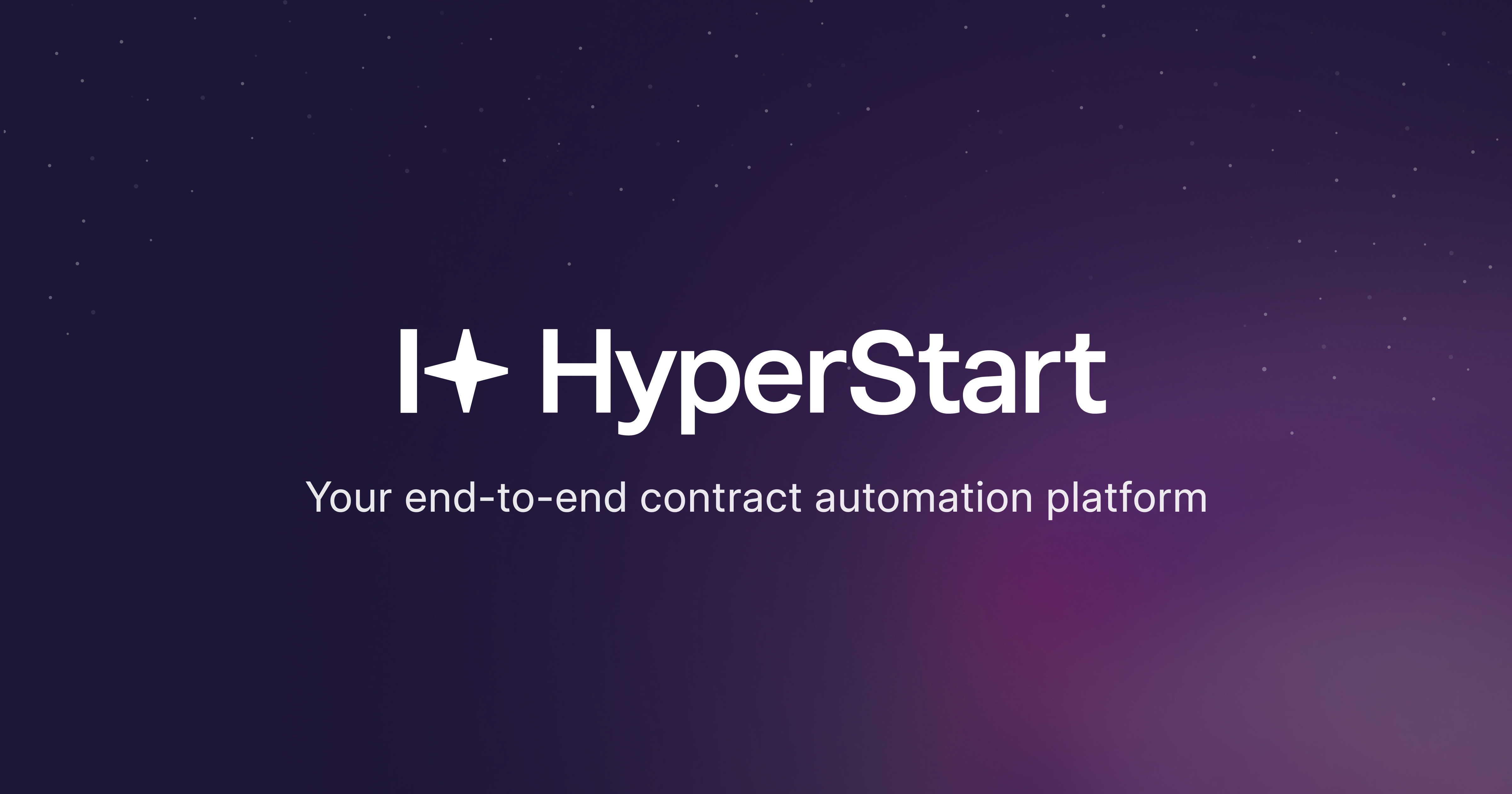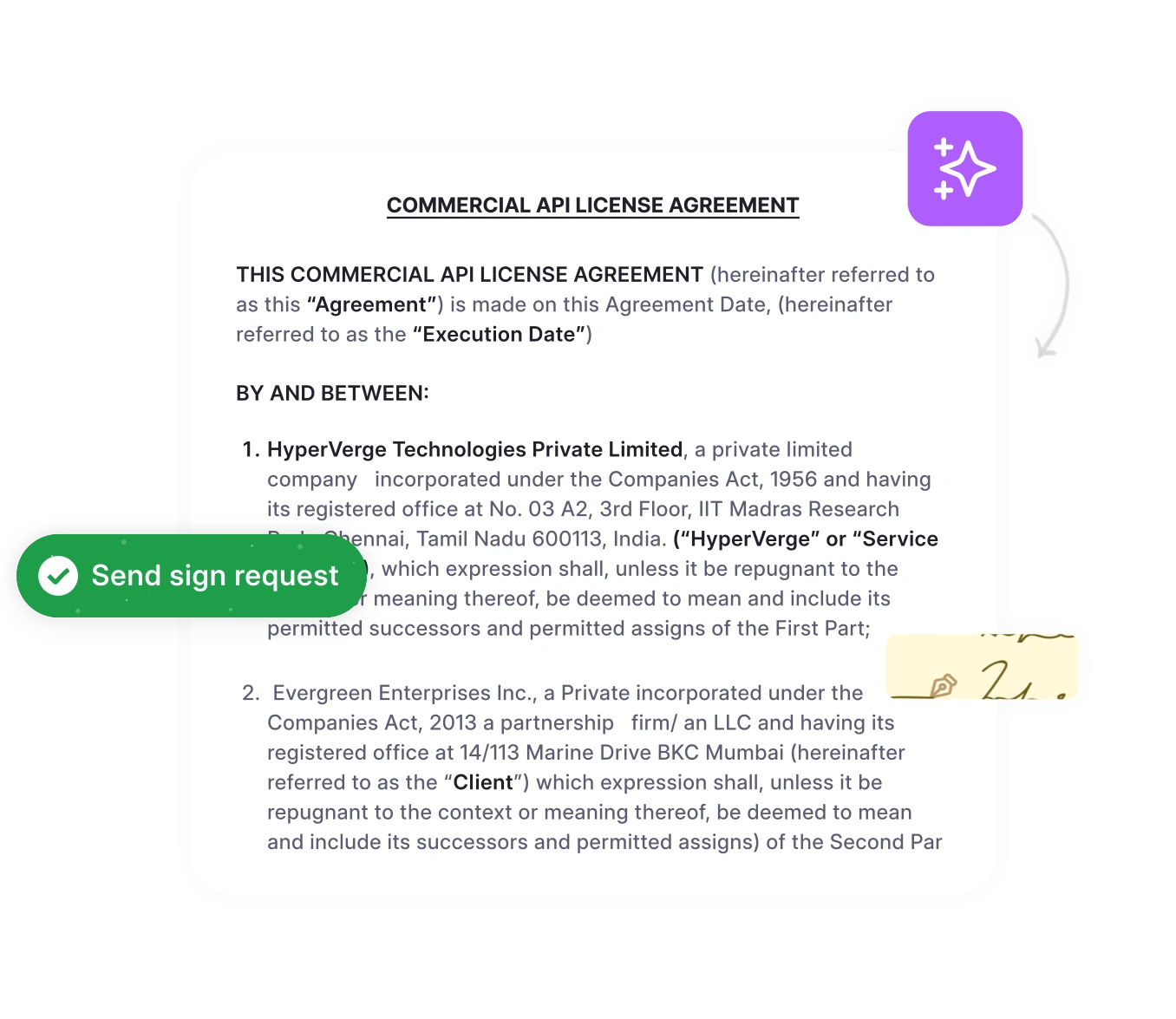Good contract management implies good business management.
Seems simple, right? While every contract manager, legal professional, and business executive strives to manage contracts as swiftly as possible, things can get chaotic at times. After all, contracts are complex documents that need to be handled with care.
This blog outlines 10 common contract management challenges and how using contract lifecycle management tools can help overcome them. Let’s start.
10 of the most common agreement management challenges are:
- Lack of contract visibility
- Unwanted contract expirations and renewals
- Inefficient contract review and approval workflows
- Disconnectivity between CLM processes and other systems
- Difficulty in locating contracts when needed
- Contract security and confidentiality concerns
- Lack of contract analytics and data insights
- Extensive contract drafting times
- Poor obligation tracking and management
- Limited control over redlining history
Using contract management software helps overcome these challenges and streamline contract management. Let’s examine each challenge and its solutions in detail.
1. Lack of contract visibility
Business teams want to access contract data to gain insights, make better decisions, and manage obligations. Contract visibility refers to an organization’s ability to access, understand, and manage its contract portfolio.
However, with legal teams managing contracts in most organizations, departments like sales, HR, and procurement have almost zero contract visibility. A KPMG report states that 40% of the contract value is lost due to inefficient contract management, mostly because non-legal teams have no visibility and limited involvement in the contract lifecycle.
How do you regain contract visibility?
A contract management system provides a single source of truth. With the entire agreement portfolio managed on a single platform, any team member in the organization can locate any contract data within a few clicks. This helps identify the contract’s progress, accelerate processes, and minimize contract TAT.
2. Unwanted contract expirations and renewals
Unwanted contract renewals and expirations are a nuisance to legal teams and hamper business efficiency. With thousands of contracts in place, it is challenging to know which contract is going to expire when.
Moreover, unfavorable auto-renewal clauses can make contract termination or renegotiation challenging. For procurement agreements, unwanted expirations can be detrimental to the supply chain.
How do you avoid unwanted expirations and renewals?
Tools like HyperStart CLM offer smart renewal and expiration tracking features. With automated alerts, you can get automated notifications for upcoming renewals and expirations in periods like 30, 60, and 90 days. This helps stay on top of key dates, leaving nothing to chance.
Never Miss A Renewal Again
Leverage HyperStart CLM’s AI to auto-track renewals, expirations, and other key dates. Start with a free trial today.
3. Inefficient contract review and approval workflows
Legal review helps identify, negotiate, and eliminate risky or problematic clauses from the agreement. Moreover, different business teams review and redline relevant sections of the contracts. This helps minimize business risks and maximize compliance.
However, reviewing and approving contracts is a time-consuming process and increases in the contract turnaround time and sales cycle, affecting revenue generation. As per a Gartner report, legal review adds 10% more time than necessary for product launch. The cost of this delay is estimated at USD 7 million.
How do you speed up reviews and accelerate approvals?
CLM tools utilize artificial intelligence technology to accelerate contract review and approval. AI automatically reviews contracts and redlines suspicious clauses for human review. No-code contract workflow builders help create templates for the review and approval process—saving legal time, speeding up approvals, and boosting contract execution.
4. Disconnectivity between CLM processes and other systems
Multiple teams handle contracts. Sales, HR, procurement, and finance rely on agreements governing day-to-day operations. However, since the legal department has the final authority, there is often disharmony between non-legal teams and CLM processes.
With different departments using different software (ERPs, HRMS, CRMs, Finance management software), contracts end up in isolated silos where cross-functional and respective teams don’t have visibility on pre-approved clauses and compliance standards, affecting efficiency and contract TAT.
How do you bridge contractual processes with external business apps?
Using digital contract management software and integrating it with external business apps helps connect non-legal teams with contracting processes. These tools offer functionalities like two-way synchronization and native contract editing, reviewing, and redlining. This helps non-legal teams manage contracts without leaving their business apps while working in harmony with legal.
5. Difficulty in locating contracts when needed
The contracting lifecycle demands moving contracts across different tools and apps. Sometimes contracts are created in tools like Word and Google Docs, sent for review through CRM, negotiated in email chains, signed in eSignature tools, and stored in cloud storage, folders, and drives.
It consequently becomes challenging for contract management to locate the latest agreement version when needed. In many cases, teams end up working on different contract versions. This is one of the most significant contract management challenges to consider.
How do you ensure contracts can be found when needed?
CLM tools centralize contracting processes—creation, review, redlining, negotiation, and signing. Moreover, you can use a digital contract repository to store all signed agreements centrally. A central contract repository is a single source of truth where all contract-related tasks are managed on a unified workspace.
Simplify Contract Management With AI
Choose HyperStart CLM and centralize all agreements to one AI-powered repository. Experience faster, better, and more efficient contract management.
6. Contract security and confidentiality concerns
Different teams have different roles to play in the contracting lifecycle. As a result, a single agreement passes through multiple departments, teams, and individuals in different stages. While one person may draft the agreement, another may review and redline it.
Since contract types and approval processes vary, the entire lifecycle pre-execution is susceptible to lack of accountability, confidentiality violations, non-compliance, and data breaches. Such risks may result in lawsuits, penalties, and loss of brand reputation.
How do ensure contract security and internal compliance?
Using a contract management system helps implement security measures like access control, encryption, and redlining control on agreements. This helps protect sensitive contract information in agreements like NDAs and SLAs from risk exposure or misuse.
7. Lack of contract analytics and data insights
Contractual insights are indispensable for sound decision-making. By leveraging historical contract data, organizations can identify opportunities and risks, negotiate better deals, and eliminate CLM bottlenecks. Not using contractual intelligence on context and negotiating positions can lead to unfavorable deals or missed business opportunities.
However, manual metadata extraction is a time-consuming process. It not only requires dedicated resources but is also prone to human errors and oversights. When processing large contract volumes, contract analysts are likely to miss out on critical data—leading to faulty analytics and polluted insights.
How do you leverage contractual insights and analytics?
You can analyze all your contracts through smart contract management software like HyperStart CLM, which extracts contract data, helps visualize it in an interactive dashboard, and presents real-time reports. Be it knowing the contract’s status in real-time or generating periodic reports, you can easily leverage contract intelligence for better business outcomes.
8. Extensive contract drafting times
Drafting is the first stage of the contract’s lifecycle and requires utmost attention and precision. Carefully drafted agreements help speed up reviews and ensure legal safety and compliance, but they also consume valuable legal time, especially in resource-crunched legal teams from smaller organizations.
Drafting agreements is an everyday task in organizations with high contract request volumes. Extensive drafting time becomes a major setback in contracting efficiency. At the same time, rushed drafting can accidentally create loopholes that require thorough review and redlining or fire-fighting post-execution.
How do you speed up contract drafting?
Using a contract management solution, legal teams can create contracts in minutes. These tools offer features like pre-approved templates and legally approved clauses. This empowers non-legal teams to self-serve low-stake contracts, giving legal professionals more time to focus on high-stake deals.
9. Poor obligation tracking and management
Fulfilling contractual obligations is mandatory by law and part of maintaining contract compliance. These obligations can be anything, from fulfilling a particular task to preserving confidentiality, paying vendors on time, maintaining contract deadlines, and delivering the required goods.
However, managing and tracking contractual obligations is challenging if done manually. This is especially true when contract documents are stored in scattered locations or when an organization has thousands of contracts signed over time. Missed obligations lead to legal penalties, fines, lawsuits, and hampered business relations with counterparties.
How do you effectively manage obligations and commitments?
Contract lifecycle management tools help improve obligation and compliance management by auto-tracking critical contract obligations and reporting on them. With features like auto-reminders and automated obligation tracking, you can stay assured that no obligation goes unfulfilled ever again.
Stay On Top Of Contract Obligations
Set obligation tracking on auto-pilot mode with HyperStart CLM. Maintain compliance and avoid expensive lawsuits.
10. Limited control over redlining history
Once drafted, contracts are reviewed and redlined by all stakeholders. Agreement redlining is a regular part of the contracting process and helps ensure that the contract satisfies the interests of all parties and is legally sound.
However, during review and redlining, contracts pass through various stakeholders, all of whom make changes and revisions to the contract. It often becomes challenging to track who changed what in the contract. Different people may also work on outdated or wrong versions of the agreement.
How do you maintain accountability in contract redlining?
Digital redlining helps maintain detailed audit trails and version histories. This helps trace back all revisions made during the redlining phase to the original stakeholder. Version control helps ensure that all parties have access to the most recently redlined and revised version of the agreement with visibility on contract history and context.
These are the common challenges in contract management and how using CLM systems helps solve these challenges and helps enhance contract performance. If you are looking for an efficient, automated, and reliable contract management solution, choose HyperStart CLM.
Manage contracts 80% faster with HyperStart CLM
Contract management can be challenging. With so many bottlenecks and unforeseen issues in the contracting lifecycle, you may lose efficiency in contracting processes. HyperStart CLM helps smartly address these challenges and transforms contract management.
With 99% accurate AI, HyperStart CLM helps automate routine contract tasks like creation, review, redlining, signing, storage, and tracking—giving you more time to focus on what matters. Not just that, HyperStart CLM unifies contracts throughout the organization, giving legal and non-legal teams excellent mechanisms to handle agreements.
Still unsure? Book a demo today to identify unique use cases of HyperStart CLM for your organization. Get started with a 14-day free trial before you decide.
Frequently asked questions
On the other hand, automated contract management is excellent in terms of efficiency, productivity, and precision. With all contract tasks being automatically managed, there is almost no room for error. This makes contract automation superior to manual contract administration.
You can prioritize these factors according to your business objectives and ensure that you get the right CLM software for your organization. HyperStart CLM checks all these boxes and helps overcome complex contract management challenges with ease.











